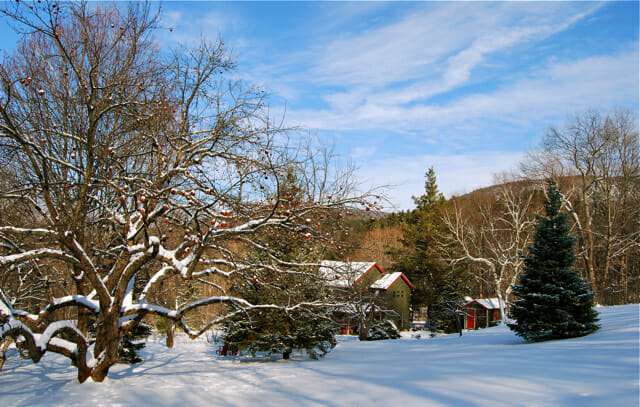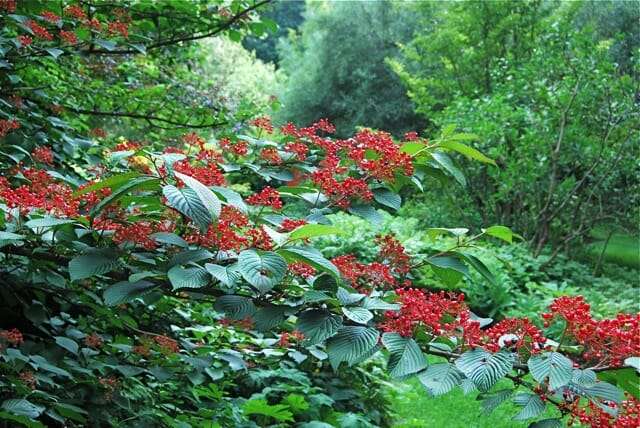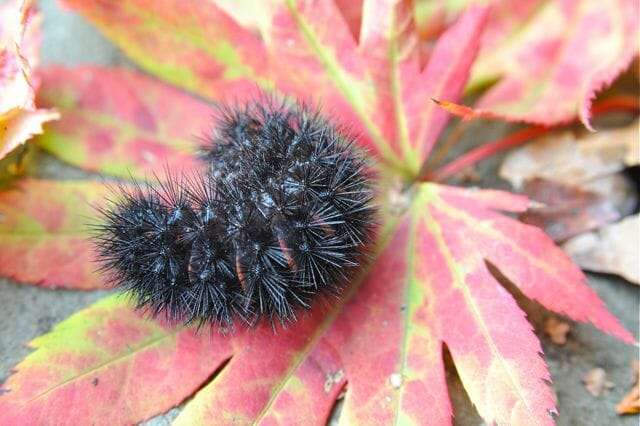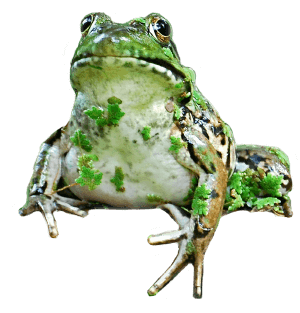happy accident: a garden for 365 days
 EACH FALL, GARDENING FRIENDS CAN BE HEARD swapping tales of garden cleanup and whatever the year’s aberrant weather brought, while also sounding their annual lament: “The season’s almost over,” they say, the level of their voiced despair growing louder as each week passes. “Another year gone.” Maybe I am just stubborn—not a bad quality to have when you work a steep hillside in Zone 5B—but such talk rankles me. I see no evidence that the garden is ever really out of season.
EACH FALL, GARDENING FRIENDS CAN BE HEARD swapping tales of garden cleanup and whatever the year’s aberrant weather brought, while also sounding their annual lament: “The season’s almost over,” they say, the level of their voiced despair growing louder as each week passes. “Another year gone.” Maybe I am just stubborn—not a bad quality to have when you work a steep hillside in Zone 5B—but such talk rankles me. I see no evidence that the garden is ever really out of season.
I mean, it doesn’t close up shop or shut it doors on me or to visual enjoyment. The garden centers may need to stand idle a portion of each year, but not the landscape itself. And so, stubbornly and defiantly over a period of 25 years, at first accidentally and lately more intentionally as my knowledge has grown, I suppose I have made a garden for 365 days. Good thing I did, since I now live in it year-round, having left my career and the city in late 2007 after more than 20 years as a weekender in the Hudson Valley-Berkshires area of New York and Massachusetts.
TO MAKE A YEAR-ROUND GARDEN was not my plan, or at least not a conscious one I could have explained when I began digging holes on an overgrown, bramble-infested bit of Columbia County, New York, land with little more to recommend it horticulturally beyond a half-dozen very old apples and a pair of ancient lilacs. My 365-day garden style was actually a happy side effect—a total serendipity—precipitated by my love of birds.

THE OTHER IMPORTANT THING I know about garden design I learned inadvertently as well, simply because I never sit down in the garden long enough to really view it from outdoors. If I am outside, I am typically doing something—weeding, dragging hoses, mowing. It’s from indoors that I do most of my garden viewing—including long hours staring wistfully in the colder-weather months, a fact that motivated me to make the “offseason” scenery more inviting with massed winterberry hollies or twig willows and dogwoods, or special conifers, on distant axes from my favorite writing seat, for instance.
Making any garden, but especially one for more than a momentary splash in spring or summer, requires a combination of tactics, not all of them horticultural. Yes, you must select good plants with a range of features and peak moments, and site them well—easiest to accomplish if you start by going inside and looking out the window first, imagining what you want as your view before digging any holes—but that’s the intellectual part, the “how-to.”

And that is where what I call the “woo-woo” portion of the gardening equation comes into play: when that connection is made. A dose of “woo-woo” definitely helps, particularly when you are staring out the window into the dead quiet of an old-fashioned snowy winter—quite a different image from the one in May, or even October. That’s what I talk about at the lectures I give: how I made that shift in perception, and at the botanical stars of my 365-day garden. Or just keep logging on here; it’s a 365-day garden, too (and online, we don’t even go dark overnight).





A wonderful and thoughtful post to help get us through January! I garden in Connecticut and share the need to have a 365 day garden. My favorite recent detail is that the birds bring the berries from the winterberry hollies over to the bird feeder and then leave parts of them on the top when they find a nicer alternative. The little red dots make a nice addition to the decor.
I also want to thank you for the recommendation of the marvelous film–“Shooting the Past”. We would never have found it without you (and Netflix). I am looking forward to the book.
Helen
Amen Sistah! While I struggle to love being in the garden on a day when it is 105+ here, I know that too shall pass and there is promise in every season. Something enchanting in every day in the garden if you look closely enough. And sometimes, instead of close up, it IS the long view. I wish I was nearby to see the presentation.
Had to chuckle a little because your post reminds me of all my “inadvertent” garden lessons. Best of luck with lectures.
Welcome, Mario, and yes, so I thought rather than appear to be wise and extremely well-educated/trained, I thought I’d tell the truth. :) School of hard garden knocks, right? Just keep moving stuff around till the “aha” comes.
Welcome, Helen. SO GLAD you enjoyed “Shooting the Past.” I have now devoured all the work of that director (Stephen Poliakoff). I love your tale of the decorated feeder. Birds here make purple and red splatter in a gaudy pattern just outside my doorway, as if to remind me they are down to the last fruits and I had better do something about it.
Hope to see you both soon.
An emphatic head nod – no, many head nods & yes’s — to this post and Mary Ann’s thoughtful comment.
My balcony is a little barer in winter than the other seasons but I do have three containers of Gaultheria procumbers in hanging baskets along the front — colour for my eyes and food for the birds. (Though I confess there are still so many berries on the plants I’m not sure they’ve attracted any birds for a meal yet.)
“Anyone who thinks that gardening begins in the spring and ends in the fall is missing the best part of the whole year. For gardening begins in January with the dream.” –Josephine Nuese
I found this quote the other day and it reminded me of the “woo-woo” you describe. It’s a stage I often neglect.
Margaret, I hope your tour schedule might bring you to Wisconsin. I know that’s a long way from your garden and Jack, but it would be so good to see you in person.
Hope you will consider coming out west for this (or another) book tour. We would love to meet you and hear what advice you have for our high desert gardens here in Utah. Also, thanks for the reminder to design with an eye to our views out the windows, always great advice!
I’m in the middle of NE – so far from your lecture circuit. Sigh. Wish I lived closer but will just continue reading A Way To Garden for the tasty tidbits about gardening. We have so many windows in our cottage that I have a view of the garden from each which is compelling to plan for each season. This is only our second winter. I too love birds and we have been building their habitat and its working. We keep seed and water out all winter and the flurry of wings during mealtime is so encouraging. Several of our fruiting and berry trees and bushes are small so their bounty isn’t lush yet but will be. In the mean time the birds are well fed and building nests here. I can envisage them enjoying the fruits within a couple years. Thank you for putting into words the lessons of the garden. Good luck with your lectures – I’m sure they will be fabulous!
Your messages of change at mid-life is inspirational to me as I am trying to figure out a way to accomplish that myself.
I look forward to your blog each week and relate to your plant and gardening preferences and feelings.
I saw your lecture schedule and was disappointed you would not be speaking at the Plant O Rama this year,as I really enjoyed last year’s lecture.Well maybe I will try to make the Wave Hill event. Keep enjoying the old time winter (as we also are here on Long Island)
I spend much of January staring out the kitchen window at my garden, dreaming and scheming, making mental notes of holes that need filling with plants that will add cheer next winter. But I always forget when warm weather arrives, bringing the instant gratification of spring. This year maybe I’ll do a little better. Your lecture series is too far north for me, so I’ll just hang out here on your blog.
Until I have a 365er, I have a simple trick I use to help my office window view look great all year round. I take pictures of my garden from the same angle from my office window all through the year to help me plan how to fill in the gaps. Then as a bonus, I load the images on my digital picture frame and view all my garden views during the winter.. Turn, turn, turn…
Good luck on your tour!
Welcome, Patrick. I take snapshots out the key windows, too — but I don’t have the digital frame (yet…you are a bad influence, tee hee). SO helpful, and one of the great things about digital. See you soon!
Thanks, Virginia…not feeling very young in these super-cold days here (minus 5 or so today so far) but I agree…it is very restorative and invigorating. Thank you.
What a wonderful relationship you have with nature – I definitely think it keeps you young.
Might you offer an explanation on how “sounds and scents contribute to the living pictures” when one is viewing the garden from inside? I can’t smell anything out there in here. (I apologize if my question is a woo-woo no no.)
I also wonder if you’ve experienced problems with the Viburnum Leaf Beetle. They destroyed one of my native Arrowwoods and I hear it’ll get worse before it gets better.
In winter, I go out for the smells and the sunlight when it shows. The warmer days bring the rich decaying leaf sent, pine resin when the snow does its “tip pruning” on the branches, and the rush of cold air in the nose. I view the red berried possum haw in the back yard and enjoy the blue gaze balls I leave out…I still see the plumes of grasses along the back fence. I watch the rhododendron leaves curl as the air freezes and then uncurl with the thaw…they are outside my sitting bench along the east side of the house. I read a lot of books and sew…but I can go out more than others as I live in North Carolina where we do not have snow all winter. Whenever the sun shines I go out for long walks and as the days pass, I watch the moon come and go. Thanks for letting me think of how I walk with nature in the winter.
So true that everyone needs more evergreens for that 365 garden. I’ve heard people say in England that for 2 weeks in June their garden is perfect. (Only two weeks?) Granted I’m sure it is still beautiful and they still have the bones of the garden, but their flush of flowers that all bloom together are gone. I’m glad you are a foliage person and I think I am turning into a boxwood person. It’s so beautiful right now!
I didn’t see the D.C. area on your tour. Maybe next time.
Candylei
Him Candylei. I will get down to the Philly-Baltimore-DC area I bet once the initial winter stuff is over. I know it’s an area I want to visit to meet up with you and other faithful friends. Thanks for the reminder.
I couldn’t agree with you more! Winter gardens can be just as beautiful as “in-season” ones. Gardeners are supposed to be creative and imaginative, aren’t they? Don’t let a little (and I use that term, euphemistically, as I live right on one of the Great Lakes….major snow belt region) weather get you down! Embrace the possibilities!
Again:
Might you offer an explanation on how “sounds and scents contribute to the living pictures” when one is viewing the garden from inside? I can’t smell anything out there in here. (I apologize if my question is a woo-woo no no.)
I also wonder if you’ve experienced problems with the Viburnum Leaf Beetle. They destroyed one of my native Arrowwoods and I hear it’ll get worse before it gets better.
So sorry I am not able to come to one of your lectures. Maybe your new book will bring you down to Virginia one of these days. Loved your thoughts on the 365 day garden. I always tell anyone planning a garden to find the window they most look out of and see where there eyes go to , and this is where they should place the garden . Also to make sure to include a focal point . It can be plant material or hardscape,just as long as it has some 4 season interest. I do my best garden planning in January while sitting inside enjoying a cup of tea by my picture window. Now if i could only remember them come spring!
A bird story; while doing the dishes I glanced up and found a Hermit thrush dining on some bittersweet I had used in a fall arrangement. I went out and put some Nandina berries in a basket but as yet she has not shown any interest.
I’m so happy that I found your site and I look forward to reading your new book! It’s great to know that there are people who look at the garden through all seasons, 365 days a year. January is rough (especially this particular one). Gardener’s must always look for inspiration and beauty even when knee deep in snow! The link below contains pictures from my winter garden.
https://thegivinggarden.wordpress.com/2011/01/28/understated-beauty/
Welcome, Shane, and glad to “meet” you, too. Thanks for inviting me over to your winter garden! :)
L O V E your point of view and passion, so evident in what you’ve created.
When I stand gazing out at my winter garden scene I shall think of you standing and gazing at your hill and it will be like we are atanding together. I only wish I could be there to share some of your delicious recipes after we have stood and gazed for awhile.
Here’s the way I enjoy gardening year ’round in northeast Massachusetts. For the last couple of years I’ve taken to “decorating” my winter vegetable garden which I can see from several windows. In early December I place a Christmas wreath on the garden gate, hang a kissing ball of greens and ribbons to replace my usual summer basket of flowers, and attach pretty bows on top of my birdhouses. I stay with the same color scheme, adding pine cones, greenery and berries. When nature adds some snow, the overall effect is charming and carries me all the way through to spring!